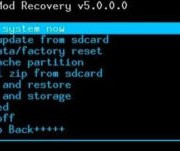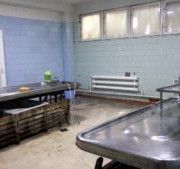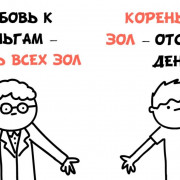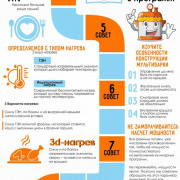Перевернутый класс: технология обучения xxi века
Содержание:
- How to Flip Your Classroom
- Советы по реализации метода перевернутых классов
- Задача педагога
- Benefits of a flipped classroom
- Theoretical basis
- Видео для прогульщиков
- Ключевые понятия методики
- 4 Kale Termos
- Закон толерантности Шелфорда
- 1 EMSA Samba Quick Press (1 л)
- Массовое онлайн-образование
- What are the key elements of the flipped classroom?
- Интересные статьи
- Flipped Classroom Activities
- Необходимость применения
- What is it?
- Drawbacks of a flipped classroom
- Flipped Classroom Examples
- Примечания
How to Flip Your Classroom
Wondering how to invert your classroom? If you’re ready to get started using the flipped teaching model, follow these steps:
1. Determine Your Technology
Since flipped teaching relies so heavily on technology to create and share videos of lectures, choosing the technology that can best help you film, edit, and share your videos is a crucial first step. You’ll also need to choose a hosting service and determine how your students will access all of your content. Additionally, you’ll need to track progress. An LMS will help you keep everything streamlined in one place as you launch your program.
2. Create Your Videos and Content
When it’s time to film, keep it short and sweet. You’ll be pleasantly surprised to learn that what used to take 15 minutes to cover in a lecture can usually fit into a five-minute video, since you won’t have to worry about classroom management. Don’t be afraid to be entertaining!
You can also seek out videos and other interactive content from quality open educational resource (OER) providers such as CK-12 and MERLOT.
3. Be Transparent With Students and Parents
Before you launch, clearly explain what flipped learning is and why you are doing it. Making a major change in your classroom culture is hard work, and flipping the mindset is not easy. Be prepared to address concerns and to revisit the «how» and the «why» often.
4. Make Your Students Accountable
Don’t forget that your flipped learning model depends on student participation. If they’re not keeping up with the at-home learning, your whole class will grind to a halt because students won’t be prepared to engage with your hands-on activities. Be sure to devise a system that tracks and holds students accountable for watching your videos.
One way to do this is by using entry tickets, or short formative quizzes at the beginning of a lesson. These will help you determine which students did their homework, which didn’t, and who needs help. If you are using an LMS, then you can get these results in real time, enabling you to differentiate instruction accordingly.
5. Keep It Up
Find a schedule and system that works for you so that filming, lesson planning and assessment all become routine. Once you have a system in place, leverage it so you can focus on your students instead of on the nuts and bolts of developing your units.
Советы по реализации метода перевернутых классов
Что делать, чтобы обучение в новом формате не провалилось на первом же уроке:
- Заранее проверьте техническую составляющую процесса (наличие компьютера, исправный интернет, понимание учениками «правил игры») — это уже значительно упростит процесс обучения.
- Каждый видеоурок (или другой материал для самостоятельного обучения) сопровождайте инструкцией и пунктами, которые ученики должны будут для себя отметить в процессе просмотра — это поможет направлять учеников и ориентировать их в большом мире новых тем.
- Просите учеников задавать вопросы по пройденному материалу — это позволит избежать недопонимания в самом начале (а не на экзамене).
- Советуйте ученикам составлять конспекты — это поможет им более осознанно подходить к изучению новых тем.
- Устанавливайте дедлайны, а лучше дайте ученикам учебное расписание заранее — это улучшит понимание общей схемы занятий.
Задача педагога
Разумеется, «Перевернутый класс» — педагогическая методика, требующая от учителя дополнительной подготовки.

Особенно она понадобится ему на начальных этапах. Учителю, занявшемуся организацией подобной работы, необходимо иметь в виду следующие моменты:
- все учебные видеоматериалы или образовательные электронные ресурсы должны иметь сопровождение в виде четких учебных целей и поэтапных инструкций;
- после записи лекции обязательно наличие заданий (можно предложить составить вопросы либо общего, либо специального характера ученикам);
- постоянно привлекать учащихся к написанию небольших заметок или конспектов по видеолекциям.
Основные аспекты модели педагогики «Перевернутый класс» рассматриваются и в Федеральном государственном образовательном стандарте. Этот документ содержит ряд требований, предъявляемых системой образования к данной технологии. Среди них:
- использование учащимися технологических инструментов, а также проведение персонализации учебного пространства с целью углубления знаний;
- понимание учениками специфики получения знаний в цифровом мире и применение ими только законных и безопасных методов;
- использование школьниками критического мышления при изучении материала;
- знакомство с новыми темами с одновременным приобретением навыков по умению решения проблем.
Benefits of a flipped classroom
- When your students get ready for the lesson, they can do it whenever and wherever they want until its deadline.
- After learning the whole material at home by watching online lectures or carrying out some research, students are already prepared to ask their teachers questions on the content. Hence they get a chance to deepen their knowledge and to have some discussions with their peers and teacher during the lesson.
- Students speak more and more, because they already have a general idea about the lesson.
- If one of your students is ill and absent, he/she can catch up with his/her classmates easier with the flipped approach than with a traditional one.
- In the flipped classroom students get a chance to analyze the new material on their own and to improve their critical thinking.
- The video lectures that you make for your students can be reused with other students.
Theoretical basis
How People Learn, the seminal work from John Bransford, Ann Brown, and Rodney Cocking, reports three key findings about the science of learning, two of which help explain the success of the flipped classroom. Bransford and colleagues assert that
“To develop competence in an area of inquiry, students must: a) have a deep foundation of factual knowledge, b) understand facts and ideas in the context of a conceptual framework, and c) organize knowledge in ways that facilitate retrieval and application” (p. 16).
By providing an opportunity for students to use their new factual knowledge while they have access to immediate feedback from peers and the instructor, the flipped classroom helps students learn to correct misconceptions and organize their new knowledge such that it is more accessible for future use. Furthermore, the immediate feedback that occurs in the flipped classroom also helps students recognize and think about their own growing understanding, thereby supporting Bransford and colleagues’ third major conclusion:
“A ‘metacognitive’ approach to instruction can help students learn to take control of their own learning by defining learning goals and monitoring their progress in achieving them” (p. 18).
Although students’ thinking about their own learning is not an inherent part of the flipped classroom, the higher cognitive functions associated with class activities, accompanied by the ongoing peer/instructor interaction that typically accompanies them, can readily lead to the metacognition associated with deep learning.
Видео для прогульщиков
Само понятие «перевернутое обучение» появилось в 2007 году. В одной из сельских американских школ, ученики которой часто пропускали занятия, два учителя химии стали готовить видеоуроки для прогульщиков – чтобы не тратить время занятий на повторное объяснение пройденных тем. В результате эти записи стали использовать и те, кто уроков не пропускал, а общая успеваемость стала лучше.
Когда речь идет о средней школе, под перевернутым обучением обычно понимают именно просмотр коротких видеолекций дома, а закрепление знаний и отработку практических навыков в классе – в форме групповой, творческой, проектной работы. Сильно упрощая, можно сказать, что классная и домашняя работа как бы меняются местами – отсюда «перевернутость». И хотя идея самостоятельного изучения нового материала не нова, перевернутое обучение в его современном виде стало возможным совсем недавно благодаря развитию информационных технологий.
Есть и варианты сложнее – например, когда учащиеся сами ищут теоретическую информацию по теме. Это похоже на привычный для российских вузов формат семинара, к которому все студенты в группе готовятся по одному списку вопросов, а не делят их между собой.
Ключевые понятия методики
Обучающая технология «Перевернутый класс» использует термины «водкаст», «подкаст» и «пре-водкастинг». Они и являются ключевыми понятиями данной методики.

Подкаст — звуковой файл. Автор, создавший такую аудиолекцию, рассылает ее по подписке, используя сеть Интернет. Получателям можно скачать подкасты на свои персональные мобильные или стационарные устройства. Возможно также прослушивание лекций в режиме онлайн.
Водкаст представляет собой такой же продукт, как подкаст, только уже с видеофайлами.
Пре-водкастинг является образовательным методом, применяя который школьный учитель создает водкаст с записью своей лекции. Это позволяет учащимся ознакомиться с темой еще до начала занятия, на котором она будет рассмотрена. Стоит отметить, что пре-водкастинг является первоначальным названием методики перевернутого класса.
Видеолекции в учебном процессе порой применяются с использованием специально разработанного для этих целей программного обеспечения, а именно:
- CMS. Эту систему используют для создания и дальнейшего управления содержанием учебного материала.
- LMS. Это система дистанционного обучения, обеспечивающая доступ школьника к учебному материалу, а также организацию горизонтальных и обратных связей.
Использование модели обучения «Перевернутый класс» способно найти свое применение именно благодаря доступности Интернета, в котором всегда можно просмотреть видео с новым материалом.
4 Kale Termos

Контейнер для любителей активного отдыха. Объём — 60 л. Изотермический бокс сохраняет заданную температуру в течение 24 ч. Оснащён боковыми ручками и прочной крышкой с подстаканниками. Изготовлен полностью из пластика. В комплекте идёт аккумулятор охлаждения.
Недостатки: большие габариты и вес, при заполнении всего объёма бокса его неудобно поднимать, отсутствие колёс. В отзывах владельцев встречается недовольство по поводу зазора между закрытой крышкой и корпусом, из-за которого быстро тает лёд.
Закон толерантности Шелфорда
Закон сформулирован Виктором Эрнестом Шелфордом в 1913 году, согласно которому существование вида определяется лимитирующими факторами, находящимися не только в минимуме, но и в максимуме. Толерантность — способность организма переносить неблагоприятное влияние того или иного фактора среды. Закон толерантности расширяет закон минимума Либиха.
| Лимитирующим фактором процветания организма может быть как минимум, так и максимум экологического влияния, диапазон между которыми определяет степень выносливости (толерантности) организма к данному фактору |
Лимитирующим фактором может быть не только недостаток, на что указывал Либих, но и избыток таких факторов, как, например, тепло, свет и вода. Организмы характеризуются экологическим минимумом и экологическим максимумом. Диапазоны между этими двумя величинами принято называть пределами устойчивости, выносливости или толерантности. Представление о лимитирующем влиянии максимума наравне с минимумом и ввел В. Шелфорд (1913) , сформировав закон толерантности. Любой фактор, находящийся в избытке или недостатке, ограничивает рост и развитие организмов и популяций.
1 EMSA Samba Quick Press (1 л)
Небольшой литровый термокувшин, который больше подходит для использования дома или в офисе, нежели на природе. От других аналогичных моделей отличается стильным, интересным дизайном, многообразием расцветок. Всего производителем предлагается 18 нейтральных (черный и белый) и ярких насыщенных цветов. Колба стеклянная, внешний корпус изготовлен из высококачественного пластика. Температуру чая и кофе сохраняет до 12 часов.
О модели можно найти немало положительных отзывов. Многим пользователям нравится, что благодаря стеклянной колбе термос не впитывает никакие запахи и очень легко моется. Например, его можно использовать не только для чая и кофе, но и бульона. Большое преимущество – количество жидкости просто регулируется легким нажатием на специальный рычажок. Покупатели в отзывах не указывают на недостатки – если они и есть, то только незначительные.
Массовое онлайн-образование
Понятие «перевернутое обучение» применяют и к высшей школе тоже, но речь в этом случае идет скорее о дистанционных технологиях в образовании. Традиционные лекции полностью заменяются записями – это уменьшает аудиторную нагрузку преподавателей и дает студентам больше свободы.
Следующий шаг – феномен массового открытого онлайн-образования, связанный с появлением межуниверситетских и даже международных образовательных платформ, где собраны курсы от ведущих университетов. Самый известный проект такого рода – Coursera, его российские аналоги – Универсариум, Открытый университет и другие.
What are the key elements of the flipped classroom?
1. Provide an opportunity for students to gain first exposure prior to class.
The mechanism used for first exposure can vary, from simple textbook readings to lecture videos to podcasts or screencasts. For example, Grand Valley State University math professor Robert Talbert provides screencasts on class topics on his YouTube channel, while Vanderbilt computer science professor Doug Fisher provides his students video lectures prior to class (see an example here). These videos can be created by the instructor or found online from YouTube, the Khan Academy, MIT’s OpenCourseWare, Coursera, or other similar sources. The pre-class exposure doesn’t have to be high-tech, however; in the Deslauriers, Schelew, and Wieman study described above, students simply completed pre-class reading assignments.
2. Provide an incentive for students to prepare for class.
In all the examples cited above, students completed a task associated with their preparation….and that task was associated with points. The assignment can vary; the examples above used tasks that ranged from online quizzes to worksheets to short writing assignments, but in each case the task provided an incentive for students to come to class prepared by speaking the common language of undergraduates: points. In many cases, grading for completion rather than effort can be sufficient, particularly if class activities will provide students with the kind of feedback that grading for accuracy usually provides.
3. Provide a mechanism to assess student understanding.
The pre-class assignments that students complete as evidence of their preparation can also help both the instructor and the student assess understanding. Pre-class online quizzes can allow the instructor to practice Just-in-Time Teaching (JiTT; Novak et al., 1999), which basically means that the instructor tailors class activities to focus on the elements with which students are struggling. If automatically graded, the quizzes can also help students pinpoint areas where they need help. Pre-class worksheets can also help focus student attention on areas with which they’re struggling, and can be a departure point for class activities, while pre-class writing assignments help students clarify their thinking about a subject, thereby producing richer in-class discussions. Importantly, much of the feedback students need is provided in class, reducing the need for instructors to provide extensive commentary outside of class (Walvoord and Anderson, 1998). In addition, many of the activities used during class time (e.g., clicker questions or debates) can serve as informal checks of student understanding.
4. Provide in-class activities that focus on higher level cognitive activities.
If the students gained basic knowledge outside of class, then they need to spend class time to promote deeper learning. Again, the activity will depend on the learning goals of the class and the culture of the discipline. For example, Lage, Platt, and Treglia described experiments students did in class to illustrate economic principles (2000), while Mazur and colleagues focused on student discussion of conceptual “clicker” questions and quantitative problems focused on physical principles (2001). In other contexts, students may spend time in class engaged in debates, data analysis, or synthesis activities. The key is that students are using class time to deepen their understanding and increase their skills at using their new knowledge.
Интересные статьи
Красивые руки к Новому году
Появление на улицах иллюминации в виде снежинок и старательно собираемые на площадях елки тонко намекают, что до любимого всеми от мала до велика праздника остаются считанные недели. И, значит, наступает пора мучительного и захватывающего поиска подарков. Мечта об универсальных подарках одолевает в это время многих. И мы можем подсказать один из вариантов, который с равным успехом порадует и мужчину, и женщину. Учитывая современную моду на уход за собой, маникюрные наборы – лучшие друзья тех, кто не знает, что подарить на Новый год.
Какие бывают скалки
Скалки – это один из самых древних кухонных аксессуаров. Их прообразы – гладко обструганные палки – встречаются даже на стоянках людей, живших в каменном веке. Но даже этот нехитрый прибор совершенствовался с годами, и современные хозяйки имеют выбор из множества вариантов. Какой из них лучше?
Почему чугунная сковорода ржавеет? Как это предотвратить?
Посуда из чугуна верой и правдой десятилетиями служила нашим бабушкам, но сейчас некоторые хозяйки с удивлением обнаруживают, что приобретенная недавно чугунная сковорода ржавеет. Почему это происходит, и что делать при появлении ржавчины? Давайте узнаем!
Какой набор разделочных досок лучше всего иметь дома?
Одной разделочной доски далеко не всегда достаточно для того, чтобы процесс готовки был удобным. Особенно, если он предваряет праздничное застолье или просто посиделки шумной компанией. Впрочем, многие умелые повара и хозяйки и для повседневной готовки используют целый набор разделочных досок. И в этом есть логика.
Как расшифровать пиктограммы на пластиковой посуде?
В прошлом материале мы рассказывали о значении непонятных значков, наносимых на различную посуду из стекла, керамики и металла. Однако помимо этих пиктограмм на пластиковых кухонных принадлежностях можно встретить и другие значки с цифрами и символами. Что же означают они?
Разнообразие выбора кухонных лопаток
Кухонная лопатка – самый обычный предмет, встречающийся абсолютно в любом хозяйстве. Кажется, что его выбор не должен занять много времени. И это действительно так: поиски лопатки для кухни не затянутся, если знать, какая нужна, а какую лучше оставить на прилавке.
Английский стиль в интерьере
Переехать жить в Лондон – мечта для большинства из нас практически не сбываемая
А вот организовать пространство в квартире в духе «туманного Альбиона» – дело вполне реальное и осуществимое.
На что обратить внимание при покупке фритюрницы. Фритюрницу нельзя назвать самым необходимым предметом в доме, но при ее наличии хозяйка может существенно расширить список блюд, ведь в этом приборе можно приготовить не только картошку, но и другие овощи, а также мясо и даже некоторые фрукты
Рассмотрим, на что стоит обратить большее внимание при покупке фритюрницы
Фритюрницу нельзя назвать самым необходимым предметом в доме, но при ее наличии хозяйка может существенно расширить список блюд, ведь в этом приборе можно приготовить не только картошку, но и другие овощи, а также мясо и даже некоторые фрукты
Рассмотрим, на что стоит обратить большее внимание при покупке фритюрницы
Какие бывают ложки и из чего они сделаны
Имя изобретателя ложки потерялось в веках. Однако известно однозначно, что этот столовый прибор был известен с глубокой древности, и гораздо старше вилки, которая в России появилась только в 17-м веке. Солидный возраст ложек подтверждает множество народных мудростей и поговорок, где они фигурируют, например, «дорога ложка к обеду», «семеро с сошкой, один — с ложкой» и так далее. Интересно, что несмотря на то, что ложка в процессе своей эволюции не претерпела существенных изменений, появилась масса разновидностей этого столового прибора, каждая из которых имеет свое предназначение.
Приметы идеальной открывалки
Открывалка для банок – незаменимая вещь для всех, кто любит побаловаться домашними соленьями или магазинными консервами. Без нее ни солеными огурчиками не полакомишься, ни бутылку с пивом не откроешь.
Flipped Classroom Activities
Removing teacher-centered lecture from class time is a major paradigm shift for most instructors, and designing lessons that put students front and center takes practice. Try these flipped classroom activities as a jumping off point for more creative lessons.
A Is for Assessment
One secret to success for the flipped model is to make sure students come to class with the background information they need. In addition to making sure your homework materials are engaging, plan to start class with a brief assessment to make sure everyone is ready. This can be a single problem to solve, a smartphone or clicker survey, or a quick quiz that you review on the spot. If appropriate, you may need to do some re-teaching before moving on.
Question Generation
Give your students a chance to clear up confusion early in the lesson with an active Q&A session. Have students write questions on a whiteboard, or provide the top five questions on an easel pad and have students vote via sticker for the ones they want answered. You can give the answers from the podium or break students into groups to help each other fill in the gaps.
Fishbowl Practice
Have volunteers come to the front to solve a problem, engage in discussion or perform a task while everyone watches. Observers should take notes on procedure and make suggestions for how to improve, then discuss. This won’t work for everything, but can be a great way to solve a math problem or work through editing a sentence or two.
Role Play
For complex humanities topics, a role play can let students get to the heart of an issue by representing different perspectives. Assign roles and have students face off in debate or discussion. For deeper thinking, make them switch roles midway through the exercise to experience new points of view.
Stay Active
Active learning is key to keeping students engaged with new material during class time. Be sure to create plenty of space for moving around the room and working in pairs and groups. For additional inspiration, check out the University of Waterloo’s active learning activities and flipped classroom activities.
Необходимость применения
В чем состоит ценность методики «Перевернутый класс»? Во время проведения обычных уроков ученикам не всегда удается понять то, что они слышат от учителя. Школьники не могут взять паузу и обдумать сказанное. В связи с этим они порой упускают самые важные моменты.
Совершенно другое дело — видеолекция, предлагаемая методикой «Перевернутый класс». Использование информационных носителей дает возможность полностью контролировать для себя подачу новой темы. При желании обучающиеся просматривают ее и перематывают, по мере необходимости, назад или вперед. Подобная возможность особенно актуальная для детей, имеющих некоторые физические ограничения.
What is it?
Flipped Classroom
The flipped classroom approach has been used for years in some disciplines, notably within the humanities. Barbara Walvoord and Virginia Johnson Anderson promoted the use of this approach in their book Effective Grading (1998). They propose a model in which students gain first-exposure learning prior to class and focus on the processing part of learning (synthesizing, analyzing, problem-solving, etc.) in class.
To ensure that students do the preparation necessary for productive class time, Walvoord and Anderson propose an assignment-based model in which students produce work (writing, problems, etc.) prior to class. The students receive productive feedback through the processing activities that occur during class, reducing the need for the instructor to provide extensive written feedback on the students’ work. Walvoord and Anderson describe examples of how this approach has been implemented in history, physics, and biology classes, suggesting its broad applicability.
Inverted Classroom
Maureen Lage, Glenn Platt, and Michael Treglia described a similar approach as the inverted classroom, and reported its application in an introductory economics course in 2000. Lage, Platt, and Treglia initiated their experiment in response to the observation that the traditional lecture format is incompatible with some learning styles.1 To make their course more compatible with their students’ varied learning styles, they designed an inverted classroom in which they provided students with a variety of tools to gain first exposure to material outside of class: textbook readings, lecture videos, Powerpoint presentations with voice-over, and printable Powerpoint slides.
To help ensure student preparation for class, students were expected to complete worksheets that were periodically but randomly collected and graded. Class time was then spent on activities that encouraged students to process and apply economics principles, ranging from mini-lectures in response to student questions to economic experiments to small group discussions of application problems. Both student and instructor response to the approach was positive, with instructors noting that students appeared more motivated than when the course was taught in a traditional format.
Peer Instruction
Eric Mazur and Catherine Crouch describe a modified form of the flipped classroom that they term peer instruction (2001). Like the approaches described by Walvoord and Anderson and Lage, Platt, and Treglia, the peer instruction (PI) model requires that students gain first exposure prior to class, and uses assignments (in this case, quizzes) to help ensure that students come to class prepared. Class time is structured around alternating mini-lectures and conceptual questions. Importantly, the conceptual questions are not posed informally and answered by student volunteers as in traditional lectures; instead, all students must answer the conceptual question, often via “clickers”, or handheld personal response systems, that allow students to answer anonymously and that allow the instructor to see (and display) the class data immediately. If a large fraction of the class (usually between 30 and 65%) answers incorrectly, then students reconsider the question in small groups while instructors circulate to promote productive discussions. After discussion, students answer the conceptual question again. The instructor provides feedback, explaining the correct answer and following up with related questions if appropriate. The cycle is then repeated with another topic, with each cycle typically taking 13-15 minutes.
Drawbacks of a flipped classroom
- Sometimes it is really difficult to motivate some of the students to use this approach, especially when they do not like homework.
- If you are going to implement flipped classroom for the first time, it will take you much time to organise and to introduce its structure to your students.
- Technology issues, such as bad internet connection or no laptop may hinder the working procedure.
- Not all students are self – disciplined and you will have to control their work, otherwise, they will not do it.
How to apply in class?
Before trying to use the flipped approach in the classroom, the following factors should be taken into account:
- Students’ age and personality,
- their abilities – weak and strong skills,
- their interests and the topic of the lesson.
This approach can suit those teenagers and adults, who are responsible, self – determined, and do not mind much homework. You should not risk applying this method with students, who usually do not do their homework, are not fond of doing tasks on their own. Otherwise, you will not know what to do in class, when these students announce they have not learnt the topic before the lesson.
Next point is your students’ abilities. If they are good at reading, have an excellent pronunciation, why waste time reading long texts in the lesson? Instead, you can ask them to read the text at home and to have a discussion during your classes. On the other hand, if they have a difficulty in understanding new grammar material, you can give some hints before the lesson, send them a video explaining the grammar and if they still do not understand the rules, you can explain in the lesson.
Another thing to be considered in flipped learning is students’ interests. If they are really keen on the coming topic, e.g. “Climate change”, “Travelling”, “Animal world”, “Airports”, “Aviation”, “Healthy food” they will surely enjoy learning before the lesson and sharing their opinion, having some discussions with classmates in the lesson.
Flipped Classroom Examples
Let’s illustrate some interesting examples of a flipped classroom, which will come in handy.
- The Standard Inverted Classroom: Students watch video lectures and read materials relevant to the next day’s class as a “homework” before the lesson. During class time, students practice what they have learnt.
- The Discussion-Oriented Flipped Classroom: Teachers assign tutorial videos, or some TED Talks, TED-Ed, YouTube videos, and other resources. Class time is then devoted to discussions of the subject.
- Vocabulary: For a lot of students learning new words can be a really tough thing. To ease the learning procedure, you can send them the list of the new words with their definitions and sentences in advance. Thus they will come to the lesson already knowing the presenting vocabulary. Here online vocabulary games turn out to be really helpful – English vocabulary word games, online vocabulary games, vocabulary games.
- Listening: Listening is definitely an important skill in learning a foreign language. However, quite a lot of time is spent on it during the lesson. That’s why you will save your time if you send listening activities as a hometask. During the lesson, you will have enough time to discuss the topic of listening and work on speaking. British Council and Agenda WEb provide with lots of listening activities for different levels.
- Reading: Whether it is a story or just an informative text, you can assign it as a home reading. To motivate your students in the reading tasks, ask them to do some post – reading activities, like true/false/not given, multiple choice, fill in the gaps, etc. Thus they will have more clear understanding of the text and will be ready for a debate with their peers in the class.
In fact, if a teacher uses a flipped approach in a proper way taking into consideration the student’s ability, his weak and strong skills, this approach will definitely turn out to be helpful.

Поделиться ссылкой:
Примечания
- ↑ Бродский А. К. Краткий курс общей экологии, Учебное пособие для ВУЗов. — Изд. «Деан», 2000. — 224 с.
- ↑
- ↑ Земледелие. Учебник для вузов (ред. Пупонин А.И., 2000).pdf
- ЗАКОН ЭКОЛОГИЧЕСКОГО ОПТИМУМА В. ШЕЛФОРДА (ЗАКОН ТОЛЕРАНТНОСТИ) // Экологический словарь, 2001








